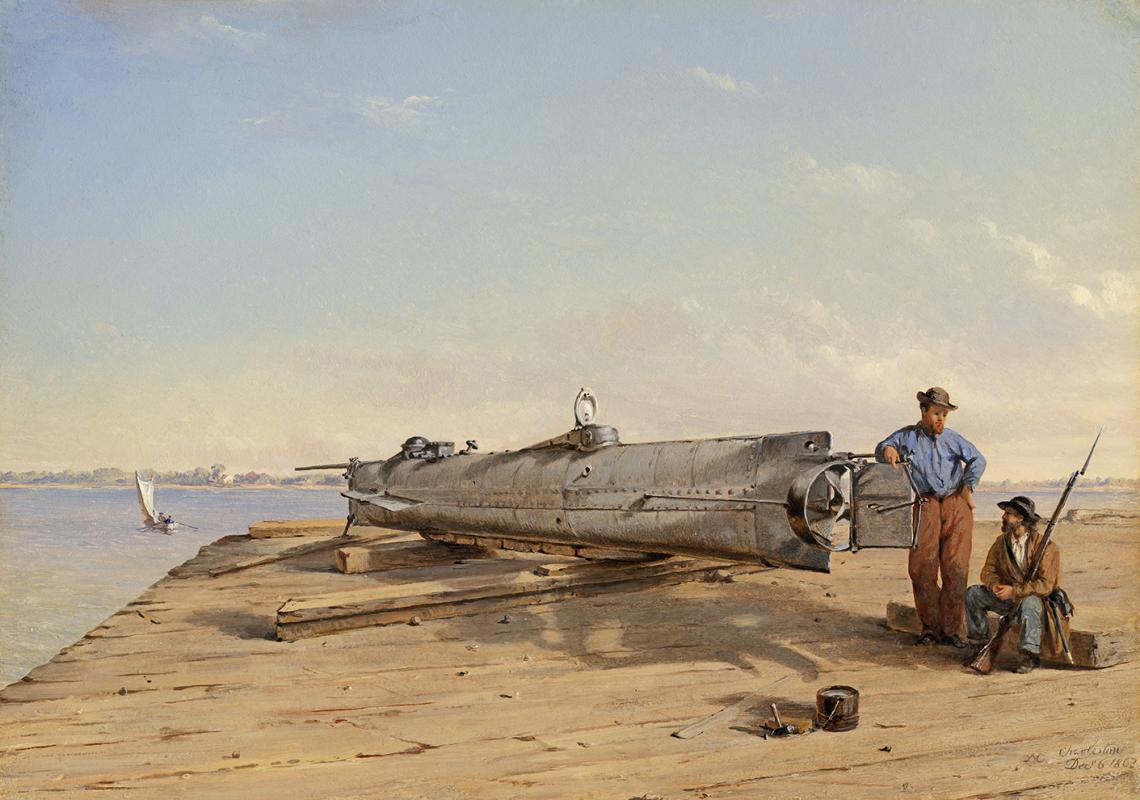Notorious Confederate submarine that sank Union ship was destroyed by its own torpedo, engineer discovers
The hand-cranked H L Hunley was too close to the explosion that sank the USS Housatonic, researcher concludes, ending 153-year mystery

Your support helps us to tell the story
From reproductive rights to climate change to Big Tech, The Independent is on the ground when the story is developing. Whether it's investigating the financials of Elon Musk's pro-Trump PAC or producing our latest documentary, 'The A Word', which shines a light on the American women fighting for reproductive rights, we know how important it is to parse out the facts from the messaging.
At such a critical moment in US history, we need reporters on the ground. Your donation allows us to keep sending journalists to speak to both sides of the story.
The Independent is trusted by Americans across the entire political spectrum. And unlike many other quality news outlets, we choose not to lock Americans out of our reporting and analysis with paywalls. We believe quality journalism should be available to everyone, paid for by those who can afford it.
Your support makes all the difference.In the dead of night on 17 February 1864, a hand-cranked Confederate submarine slipped towards a Union warship and achieved a first in the history of warfare.
Detonating a torpedo packed with 135lbs of black powder, it became the first submarine in the world to sink an enemy vessel as the USS Housatonic went down with the loss of five lives in Charleston Harbour.
But the 40-foot H L Hunley and its crew of eight were never seen again until the remarkably intact wreckage was discovered in 1995.
Now scientists believe they have finally worked out what killed the crew, whose skeletons were found eerily still sitting at their stations on the crank. Their bones were unbroken, the bilge pumps had not been used and the air hatches were closed. Their deaths appeared to be a mystery.
After three years of research involving setting off explosions near a scale model, firing weapons from the period at plate iron and studying the effect of blasts on human anatomy, Dr Rachel Lance, of Duke University, concluded they were killed by the shockwave from their own torpedo.
It was a simple keg of gunpowder on a 16ft pole which the Hunley rammed into the Housatonic’s hull.
When it exploded, the crew of the Hunley were within 42 feet of the blast. And, at that range, the shockwave would have had a devastating effect on the soft tissues of their bodies, particularly their lungs and brains.
Dr Lance said: “This is the characteristic trauma of blast victims, they call it 'blast lung’. You have an instant fatality that leaves no marks on the skeletal remains.
“Unfortunately, the soft tissues that would show us what happened have decomposed in the past 100 years.”
She said blast-lung occurs due to the different speeds that a shockwave travels through air and water – 340 metres per second in the former but 1,500mps in the latter.
“When you mix these speeds together in a frothy combination like the human lungs …, it combines and it ends up making the energy go slower than it would in either one,” Dr Lance said.
In fact the shockwave would have travelled at just 30mps in the lungs and this would have amplified the tissue damage.
This would have created the “worst case scenario for the lungs”, with shear forces tearing apart the delicate structures where the blood stream meets the air.
This would have filled their lungs with blood and Dr Lance calculated this alone would have had an 85 per cent chance of killing them instantly. They would have also suffered traumatic brain injuries.
After the explosion, with no living crew to power it, the Hunley would have drifted out on the tide, slowing taking on water and sinking.
“All the physical evidence points to the crew taking absolutely no action in response to a flood or loss of air,” Dr Lance said.
“If anyone had survived, they may have tried to release the keel ballast weights, set the bilge pumps to pump water, or tried to get out the hatches, but none of these actions were taken.”
Join our commenting forum
Join thought-provoking conversations, follow other Independent readers and see their replies
Comments